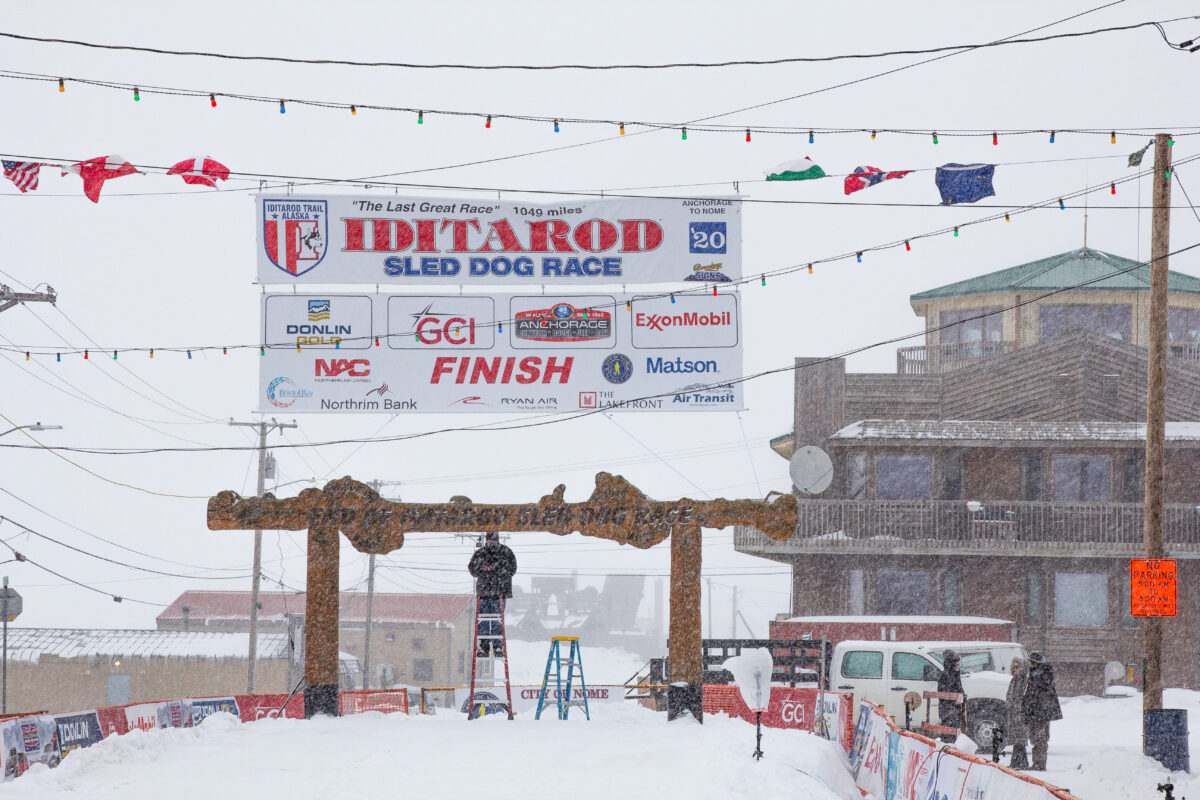The 2021 Iditarod Trail Sled Dog Race kicked off yesterday with just 47 mushers competing for the title of Iditarod Champion. This year’s Iditarod will look different in a lot of ways, especially with the absence of familiar faces who opted not to participate in this year’s shortened “Gold Trail Loop.”
21 mushers withdrew from the 2021 Iditarod, including last year’s champion Thomas Waerner, 4-time Iditarod champion Jeff King, veteran musher Linwood Fiedler, as well as race rookies like Gabe Dunham.
Dunham competed in the 2020 Iditarod, making it as far as Unalakleet before her dog team contracted a virus which forced her to make a tough decision on the trail.
“Ironically, yes, we made it into Unalakleet, I had 12 wonderful dogs, but they had gotten an upper respiratory virus, and we had to end our little race early.”
– Gabe Dunham
The Willow-based musher had been “on the fence almost all season” about running the 2021 Iditarod, but she ultimately decided to pull the plug in early February, citing the way COVID-19 affected her economically.
“Well, a big piece of it was shutting down tourism. The past couple years I’ve been working with Linwood Fiedler on his glacier, and that’s been our primary income. And so, thankfully, I’ve been able to fall back on a trade, carpentry, and been able to continue working, but that financial impact was huge.”
– Gabe Dunham
A significant number of mushers own and operate dog kennels and generate income from dog sled tours and educating others about mushing. With continued COVID-19 restrictions on travel and tourism in Alaska, mushers like Dunham were hit hard and compelled to make sacrifices as a result.
Dunham expressed her confidence in the measures the Iditarod has put in place to ensure the safety of the mushers. That said, the loss of income made her decision a difficult one. And by not running, this means losing the sense of camaraderie and community engagement that typically defines the trail.
“Yea, that’s part of it, you know I mean, last year was my rookie year, but I still have made friends just being around the race and everything that are in Nome or in Unalakleet, Kaltag, and you run into the towns and we could actually say hi, and they give you big hugs when you come in and it’s great (laughs).”
– Gabe Dunham
Dunham and her team competed in smaller races this season, like the Willow 300 and the Two Rivers 200, but she’s hopeful that next year she’ll get another shot at running the “Last Great Race.”
“You know with the vaccines coming out and people being able to at least overcome this virus a little bit and businesses opening back up, I look forward to a little bit of normalcy and being able to finish in Nome.”
– Gabe Dunham
While no final decision has been made, all indications suggest that the Iditarod will return to Nome for its 50th running in 2022.
Image at top: The burled arch in Nome being prepared for the Iditarod finish. Photo from KJ McElwee, KNOM.





